In Sweden today Heraldry is used primarily by Royalty but is also extensively used by corporations and government offices. In order to become legally registered and protected under Swedish law, an official coat of arms must first be registered with the Swedish Patent and Registration Office (PRV), and is subject to approval by the National Herald (Statsheraldiker) and the bureaucratic Heraldic Board of the National Archives of Sweden. Heraldic arms of common citizens (burgher arms), however, are less strictly controlled. These are recognized by inclusion in the annually published Scandinavian Roll of Arms. Swedish heraldry has a number of characteristics that distinguish the Swedish style from heraldry in other European countries.
Common features of Swedish heraldry are similar to those of other Nordic countries and Germany, placing it in the German-Nordic heraldic tradition, distinguished from Gallo-British heraldry and other heraldic traditions by several key elements of heraldic style. One of these is the use of multiple helmets and crests, which cannot be displayed separately from the main shield. These helmets and crests are considered to be as important as the shield, each denoting a fief over which the bearer holds a right. In Scandinavia (as distinct from the German custom), when an even number of helmets is displayed, they are usually turned, with their crests, to face outward; when an odd number, the center helmet is turned affronté and the rest turned outward (whereas in Germany the helmets are turned inward to face the center of the escutcheon). Additionally, the crests are often repetitive of charges used on the main shield, and marks of cadency typically occur in the crest, rather than on the shield as in Gallo-British heraldry. Also, the use of heraldic furs on the shield, while common in Gallo-British heraldry, is rare in German-Nordic heraldry. Furs in Scandinavia are generally limited to ermine and vair, which sometimes appear in mantling, supporters, or the trimmings of crowns, but rarely on the shield.
 Consistent with German-Nordic heraldry, the most common charges in Swedish heraldry include lions and eagles. Additional animals that frequently appear in Swedish heraldry include griffins and (especially in the northern provinces) reindeer. Stars are common and are usually depicted with six points and straight sides, in contrast to the Gallo-British tradition, which typically depicts stars as either a five-pointed straight-sided star (mullet) or as a six-pointed wavy-sided star (estoile). In Swedish, these stars are usually described as "six-pointed stars" (sexuddig stjärna). In terms of blazoning, Swedish heraldry is described in plain terms using common Swedish language, rather than using specialized language such as Blazon. Canting arms ( displaying a pun on the name upon the shield) occur frequently.
Consistent with German-Nordic heraldry, the most common charges in Swedish heraldry include lions and eagles. Additional animals that frequently appear in Swedish heraldry include griffins and (especially in the northern provinces) reindeer. Stars are common and are usually depicted with six points and straight sides, in contrast to the Gallo-British tradition, which typically depicts stars as either a five-pointed straight-sided star (mullet) or as a six-pointed wavy-sided star (estoile). In Swedish, these stars are usually described as "six-pointed stars" (sexuddig stjärna). In terms of blazoning, Swedish heraldry is described in plain terms using common Swedish language, rather than using specialized language such as Blazon. Canting arms ( displaying a pun on the name upon the shield) occur frequently.

